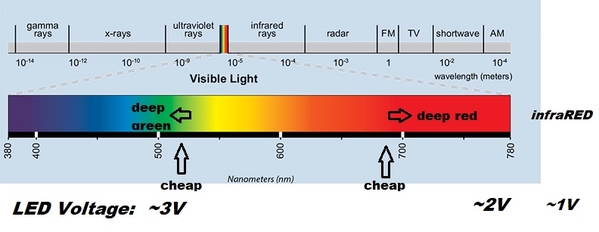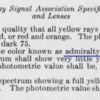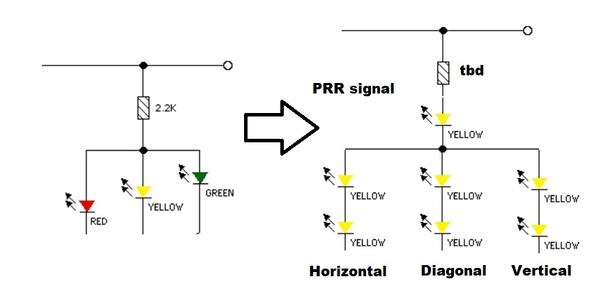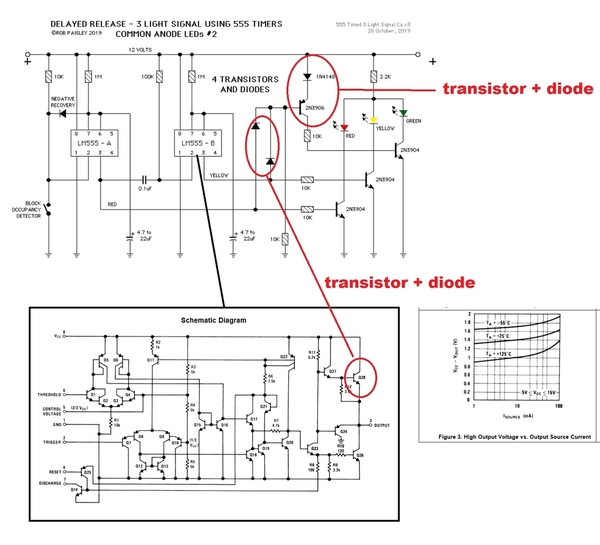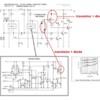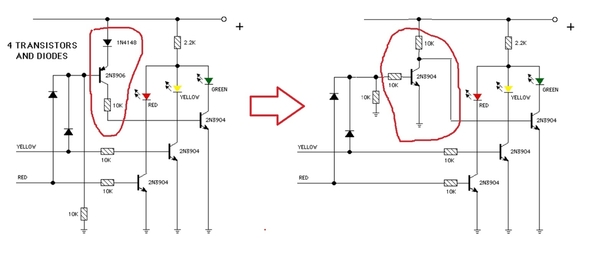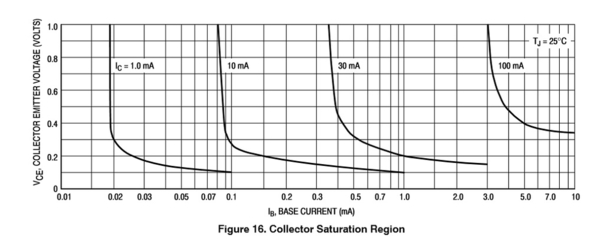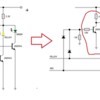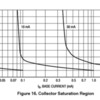For the 339 circuit, I didn't have the actual signal connected, but was using individual LEDs, red, yel, grn. as they show in the schematic. I did have the 2.2k resistor feeding all 3 LEDs as in the schematic, but I didn't try any different values there. I did try shuffling a few things around and a couple of different resistor values in the wire feeding the positive side of the 339 inputs. I got differing results which I didn't document, but I will re-try the circuit as shown and report back with more details.
One thing that caused me some confusion was the 'A' (top) comparator of the 339. It's shown with the positive wire going to the negative input, which doesn't match the other two comparators B & C. Then an 'H' has been added to that connection of the A comparator and just the opposite is shown for the other A comparator input? I tried swapping them around still didn't get the expected operation of the LEDs.
I think I may have really butchered the above description? The picture of the schematic explains it much better. Not sure I could have done it in 1,000 words either?
I am not all that familiar with the PRR signals and we have not tried anything with those. We started out with just the common cathode version that Rod found on Rob PAisley's website and it kind of went from there. the PRR signals look like an interesting thing to maybe try and accommodate though. I will look at your schematic above some more.
As for the 2 aspect signals, we haven't talked about those either, but I do actually have some we_honest dwarf signals and it might be nice to be able to operate them from the same circuit/PCB. I guess I was thinking of those as a separate project some day, was probably going to use them for switch position indication, but nothing definite there. I hadn't really considered adapting what ever we end up with here to also operate those. Good thoughts, more to think about!




